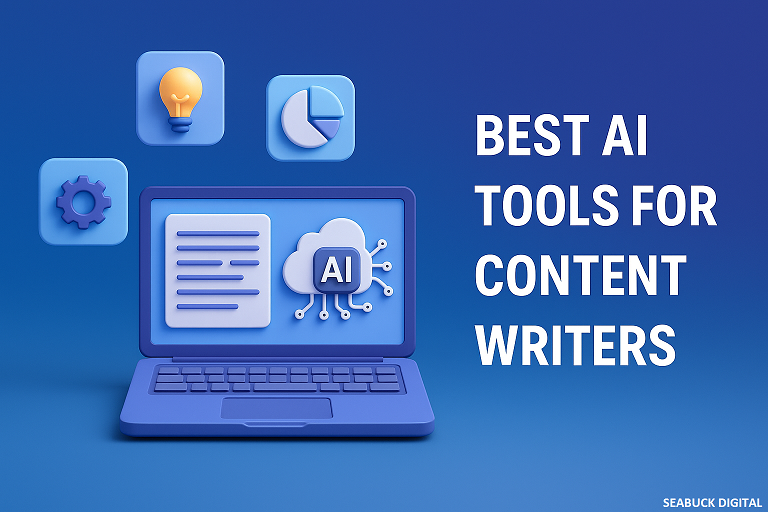
Introduction
AI has completely changed the content game. From writing blogs to product descriptions, it’s faster than ever to produce content. But here’s the kicker — Google isn’t impressed by robotic fluff. AI content may be fast, but if it’s not optimized, it won’t rank. Period. You have to optimize AI content.
So how do you take an AI-generated article and turn it into a Google-ranking superstar? Let’s break it down.
Understanding Google’s Content Guidelines
E-E-A-T: Experience, Expertise, Authoritativeness, and Trust
Google uses E-E-A-T to judge content quality. Even if your article was written by AI, you need to add real-world experience and insights to demonstrate trustworthiness.
What Google Says About AI Content
Google doesn’t ban AI content outright. In fact, they focus more on quality and usefulness than who or what created it. If it’s helpful, it can rank — even if it started with a bot.
Start with a Strong Keyword Strategy
Use Low-Competition, High-Intent Keywords
Start by researching keywords that have clear search intent but aren’t dominated by huge sites. Think long-tail keywords like “best AI content optimization tools for bloggers” instead of just “AI content.”
Semantic SEO and Topic Clustering
Use related keywords and build content clusters around your main topic. Google loves context. If you’re writing about optimizing AI content, link it with topics like “on-page SEO” or “readability.”
Tools to Find SEO-Friendly Keywords
- Ahrefs
- Ubersuggest
- LowFruits
- Google Keyword Planner
- AnswerThePublic
Make the Content Human-Centric
Inject Human Tone and Relatability
AI writes straight facts. You write with flavor. Add examples, jokes, questions, and stories. Talk like you’re explaining things to a friend.
Add Personal Experiences or Unique Insights
Even if AI writes the skeleton, you bring the soul. Add case studies, real-life use, or opinions. That’s what gives your post originality.
Avoid Robotic Patterns and Phrasing
If every sentence starts the same way or sounds generic, break it up. Mix up sentence lengths and throw in some personality.
Optimize Headings and Subheadings
Structure Your Content for Easy Reading
Google scans headings to understand structure. Use H2s for major points, H3s for subpoints, and occasionally H4s to go deeper.
Use Primary and Secondary Keywords Naturally
Your headings are prime real estate. Use keywords, but don’t stuff. Something like “How to Optimize AI Blog Posts for SEO” works better than “AI Content Google Optimization Best Tips 2025.”
Include Questions and Long-Tail Keywords
Think like a searcher. Use headers like:
- “How can I make AI content more readable?”
- “What is the best way to structure an AI article?”
Enhance On-Page SEO Elements
Title Tags and Meta Descriptions
Your title tag should be clear and clickable. Keep it under 60 characters. The meta description should highlight the value of the article in under 160 characters.
Image Alt Texts and Internal Linking
Alt text isn’t just for accessibility — it’s also SEO gold. Link to your other articles using natural anchor text to build site authority.
URL Structure and Slug Optimization
Keep it clean:
example.com/optimize-ai-content
example.com/blog/post?id=39820290
Improve Readability and Engagement
Short Paragraphs, Bullet Points, and Lists
No one wants to read a wall of text. Use white space. Lists and bullet points are your friends.
Use Active Voice and Conversational Tone
Write like you talk.
Instead of: “The content was created by the AI system,”
Say: “The AI created the content.”
Tools to Test and Improve Readability
- Hemingway Editor
- Grammarly
- Yoast SEO
- SurferSEO
Fact-Check and Cite Authoritative Sources
Build Trust with References and Stats
Link out to credible sources like HubSpot, Google Docs, or Moz. This boosts your authority and helps with ranking.
Avoid Misinformation or Vague Claims
AI sometimes “hallucinates” — make sure claims are real. Double-check names, dates, and stats.
Add Original Media and Visuals
Infographics, Screenshots, and Videos
Visuals improve dwell time and make content more digestible. Add a branded infographic or even a Loom video breakdown.
Compress Images and Optimize File Names
Use descriptive names like ai-content-optimization-guide.png and compress using tools like TinyPNG.
Include Author Bio and Contact Info
Boost Credibility with Real Human Profiles
An article by “Admin” won’t cut it. Use a real name, photo, and bio to build credibility.
Add Author Links and Social Signals
Link to LinkedIn profiles or Twitter accounts. Google notices social signals and expertise.
Create a Logical Content Structure
Use Clear Flow from Intro to Conclusion
Jumping around confuses both readers and bots. Follow a natural storytelling arc: Problem → Solution → Action.
Table of Contents for Long-Form Pieces
For anything over 1500 words, include a clickable table of contents using anchor links.
Optimize for Featured Snippets
Use Questions and Concise Answers
Snag the snippet by answering common questions clearly in under 50 words.
Add FAQ Schema Markup
Use tools like Rank Math or Schema Pro to add FAQ structured data and improve visibility.
Update and Refresh Content Regularly
Keep Stats, Links, and Info Up to Date
Outdated content dies fast. Set a quarterly review cycle to keep things fresh.
Use Update Logs or Modified Dates
Show Google that your content is alive and well with visible “Last updated” tags.
Monitor SEO Performance
Use Google Search Console and Analytics
Check impressions, rankings, and click-throughs regularly. Use the data to guide future optimizations.
Track Rankings, CTR, and Bounce Rate
If rankings drop or bounce rates spike, it’s a sign something’s off. Tweak accordingly.
Conclusion
AI is a powerful tool, but SEO is the fuel that makes it fly. Whether you’re using ChatGPT, Jasper, or any other AI writing assistant, your content won’t rank unless it’s optimized with intention. From strong keyword research to structured formatting and human insights, every detail matters. Want to win Google’s heart? Write like a human, optimize like a pro.
FAQs
1. Can AI content rank on Google?
Yes, as long as it’s high-quality, helpful, and optimized. Google cares about value, not the writer.
2. How do I make AI-written content more human?
Edit for tone, add personal experiences, and avoid robotic phrasing. Treat the AI draft as your first rough sketch.
3. Is AI content against Google’s rules?
No. Google has stated that content quality is more important than whether a human or AI wrote it.
4. What tools help optimize AI articles?
Use SurferSEO, Grammarly, Hemingway Editor, Yoast, and Google Search Console for complete optimization.
5. How often should I update AI-written articles?
Ideally, review and refresh every 3–6 months to keep it accurate, relevant, and competitive.
Read More:
Will AI-Generated Content Rank in 2025?











